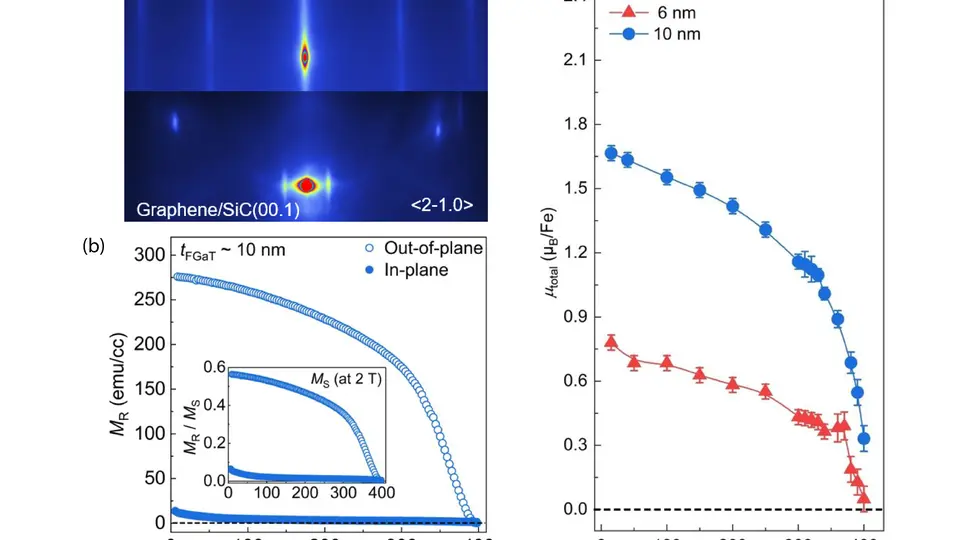Above Room-Temperature Ferromagnetism in Fe₃GaTe₂ Thin Films Grown by MBE
/ Announcements

A new study published in ACS Nano, led by researchers from the Paul Drude Institute for Solid State Electronics (PDI) with collaborators from Helmholtz-Zentrum Berlin (HZB), Helmholtz Zentrum Dresden-Rossendorf, and QZabre AG, Switzerland, demonstrates the successful growth of above-room-temperature ferromagnetic Fe₃GaTe₂ thin films using molecular beam epitaxy (MBE). The findings provide a deeper understanding of 2D ferromagnetic materials and open new pathways toward scalable spintronic heterostructures.
Fe₃GaTe₂ is one of the most promising van der Waals ferromagnets, showing stable magnetic ordering above room temperature. Until now, achieving such stability in epitaxially grown films has been challenging, often limited by structural disorder or compositional inhomogeneity. This study shows how precise control over film thickness and composition allows fine-tuning of key magnetic properties, including the transition temperature and strong perpendicular magnetic anisotropy, marking a significant step toward practical spintronic devices such as energy-efficient memory and neuromorphic computing components.
The work was carried out within the project MagicTune — an EU Flag-ERA initiative associated with the Graphene Flagship — which focuses on advancing the control (“tuning”) of magnetic properties in layered materials for next-generation spintronic devices. The study was further supported by the German Research Foundation (DFG), project no. 533948427.
Title: Above-Room-Temperature Ferromagnetism in Large-Scale Epitaxial Fe3GaTe2/Graphene van der Waals Heterostructures
Authors: T. Shinwari*, K. Imtiyaz Ali Khan*, H. Lv, A. Abebe Kassa, F. Munnik, S. Josephy, A. Trampert, V. Ukleev, C. Luo, F. Radu, J. Herfort, M. Hanke, J. Marcelo Jordao Lopes
Source: ACS Nano 2025
DOI: https://doi.org/10.1021/acsnano.5c07732
Core Research Area (CReA): Magnetic Materials for Spintronics and Magnetoacoustics